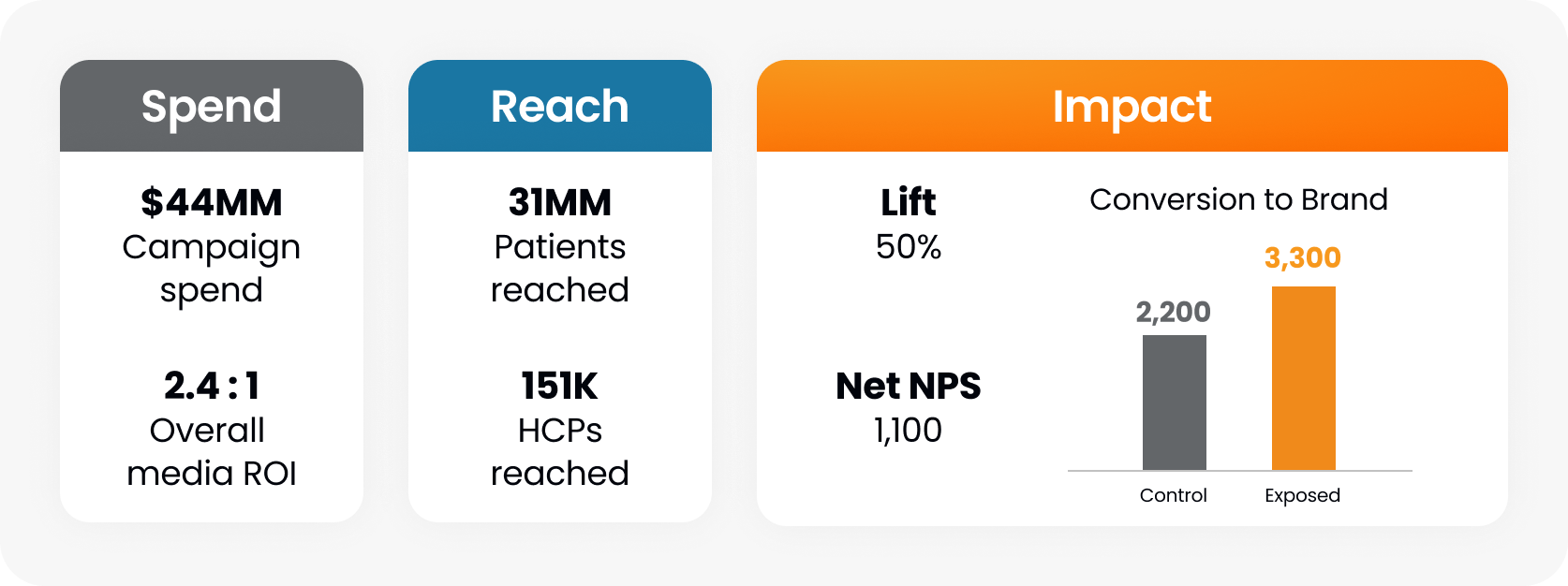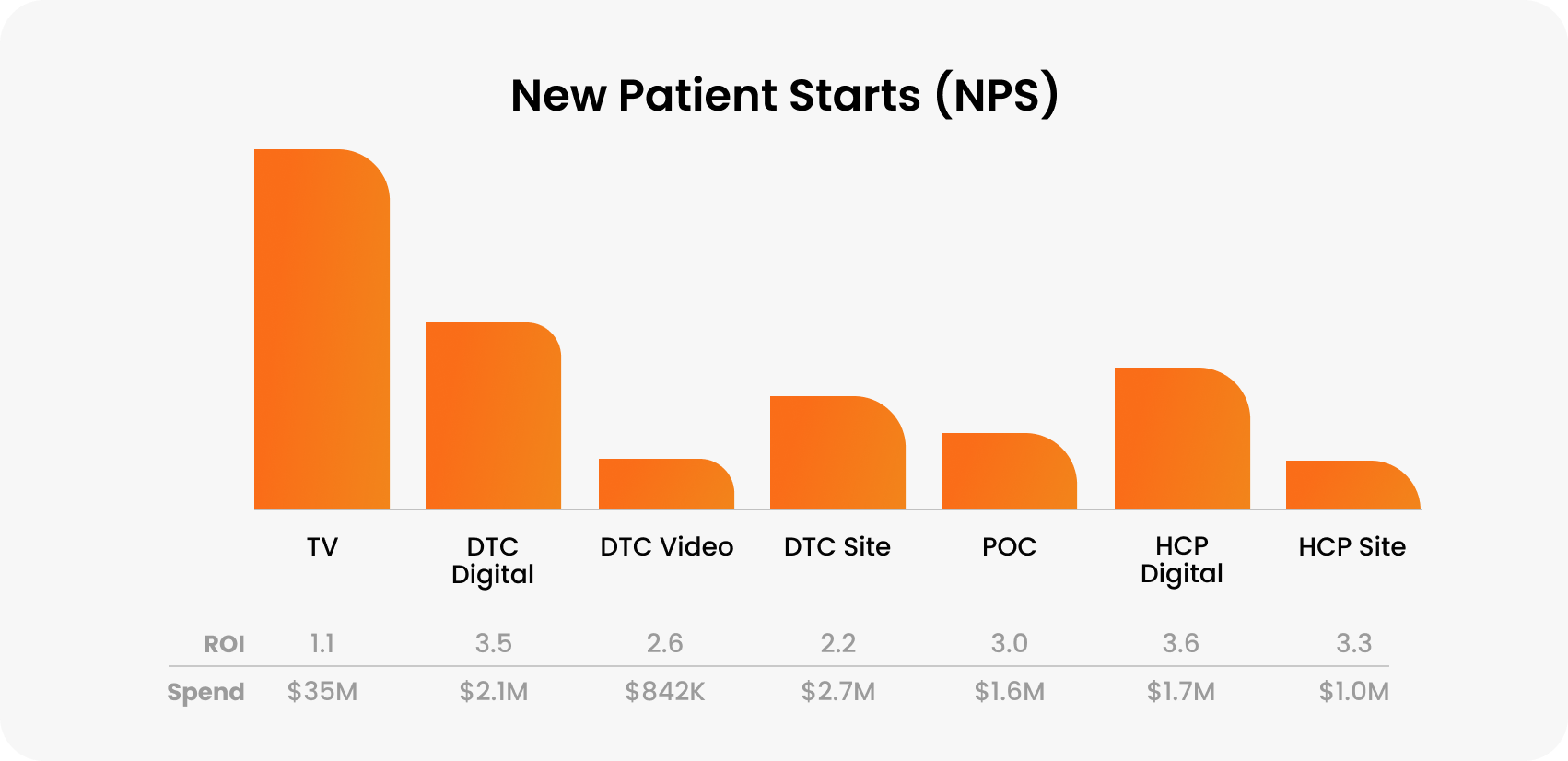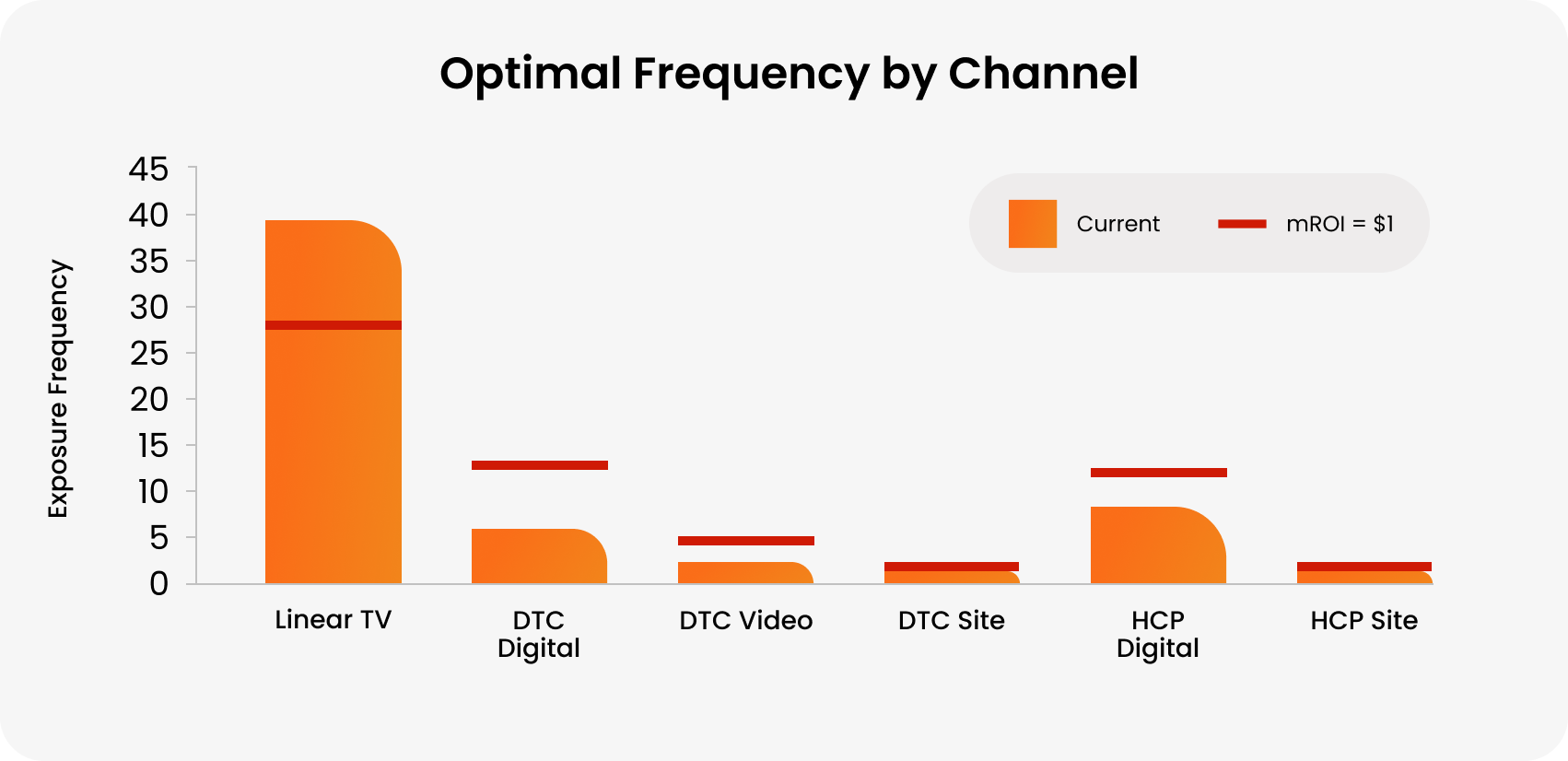Article
Combining DTC and HCP Marketing with Field Data to Increase New Patient Starts
Learn how one brand accessed data for all touchpoints across its DTC and HCP audiences to increase new patient starts and optimize its marketing budget.
Coordinating sales, HCP, and DTC marketing can help drive better customer and brand outcomes. But, converging two different audiences — the patient and the healthcare professional (HCP) — is challenging. Both audiences have distinct journeys, but their paths must meet at a crucial point: the exam room. Creating a cohesive omnichannel experience can lead to more productive conversations between patients and doctors, ultimately driving better outcomes.
To achieve omnichannel excellence, brands need access to data that links all touchpoints across consumer and HCP audiences. This granular data can help brands optimize their budgets, ensuring every marketing dollar is spent effectively. Let’s look at how one growth brand used this type of data to refine its marketing strategy and invest more effectively.
A growth brand case study
After establishing broad market awareness, the growth brand next focused on increasing new patient starts (NPS). To achieve this goal, while also ensuring they maximized their budget, the team needed to understand which channels were providing the most value across patient and HCP audiences and how those channels could work together to drive NPS. The brand used Veeva Crossix Omnichannel Boost, which links patient and HCP marketing and field ecosystems, to help:- Identify what channel combinations would drive the most significant impact across audiences.
- Determine the optimal investment levels for each channel to prevent oversaturation and identify opportunities for higher frequency where it was beneficial.
- Understand the ideal sequence of channels that would increase the likelihood of a new patient start.
To begin, the team established a baseline for improvement. They looked at current spend, reach, and impact.

Using DTC and HCP data together to drive strategy
With data from Omnichannel Boost, the team learned multi-channel touchpoints significantly increased campaign effectiveness, specifically:


They could now leverage this data to reevaluate their strategy.
Shifting channel allocation
While linear TV effectively generated the most NPS volume, its ROI was not as high as other channels. Consumer digital and HCP digital showed higher ROI and scalability, but represented a smaller portion of NPS at greater efficiency. This meant that the brand could reduce its TV spending slightly and reallocate budget to HCP and DTC digital channels without seeing a significant drop in the overall number of new patients.

Now that the team knew they could shift funds from linear TV without compromising NPS, they needed to find under what conditions DTC digital, DTC video, and HCP digital were most effective.
Changing frequency
Omnichannel Boost reveals the point at which a channel's frequency is no longer ROI positive. Looking at this data, the team saw that TV frequency was past optimal levels. With HCP and consumer digital, the brand had room to increase frequency for incremental ROI.

With these learnings, the brand used the following strategies to use their marketing budget more effectively:
- Reallocated TV spend
- Reduced linear TV oversaturation
- Invested more in cost-efficient digital channels that orchestrate well with TV
- Amplified HCP digital among select publishers to amplify sales efforts
Conclusion: Taking steps toward omnichannel
Having a holistic view of performance across all of their audiences and channels, the brand uncovered synergistic channel combinations, optimized channels for both frequency and sequence, and identified coordinated sales and marketing efforts. This helped the team better direct their marketing budget to make the most impact and reach their goal of increasing new patient starts.
Learn more about how brands use data to create a seamless omnichannel experience.